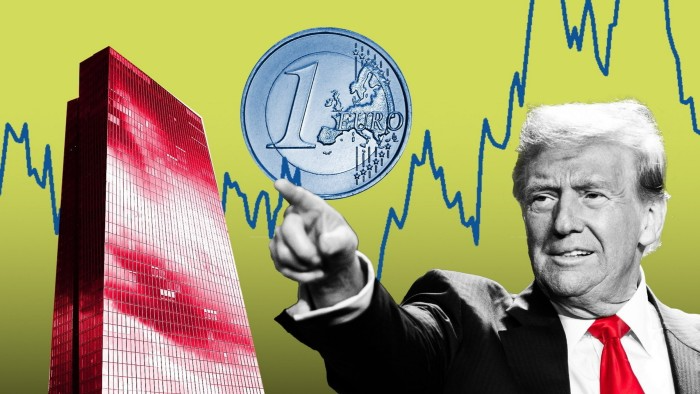The financial landscape is shifting, and stock investors are paying close attention. With interest rate hikes cooling and the potential for dramatic policy changes under a second Trump administration, markets are bracing for what’s ahead. But what does this mean for your portfolio?
Whether you’re a market enthusiast, financial analyst, or seasoned investor, understanding these dynamics can help you make smarter investment decisions. This blog will break down the current economic conditions, analyze potential impacts of a second Trump presidency, and explore opportunities for investors during this transitional period.
Rate Hikes: A Market Relief or False Hope?
The Cooling Trend in Interest Rates
The Federal Reserve’s aggressive interest rate hikes aimed at curbing inflation have defined much of the recent economic narrative. But after consecutive rate hikes over the last two years, there are signs the Fed is ready to ease its foot off the economic brakes. Experts forecast a shift toward steadier rates in the months ahead, signaling a potential upswing for growth-sensitive sectors like technology and real estate.
Lower interest rates often lead to cheaper borrowing, which can benefit corporations looking to expand, and consumers who are more likely to spend. For investors, this means renewed confidence in cyclical stocks—think tech giants or homebuilders—that thrive during economic recoveries.
However, it’s not all smooth sailing. Inflation still lingers above the Fed’s 2% target, leaving uncertainty around whether rates will hold or pivot back higher. Investors must approach cautiously, balancing optimism with vigilance.
Opportunities in Growth Stocks
The slowdown in rate hikes has already reignited interest in growth-focused stocks. Sectors like technology and renewable energy, long considered volatile during rate increases, could become attractive again. Major companies such as Nvidia and Tesla have seen a rebounding demand for their shares, suggesting early optimism among investors.
For those looking to ride this wave, ETFs like the QQQ, which tracks Nasdaq’s top-performing growth stocks, are an accessible and less risky option. Think of it as diversifying your exposure while positioning yourself for potential market rallies.
Be Wary of Overreactions
Despite promising prospects, beware of overreactions. The market has historically surged during initial pauses in rate hikes, only to face corrections when other economic headwinds—like geopolitical tensions or unforeseen events—create volatility. Exercise strategic patience.
A Second Trump Presidency: What It Could Mean for Stock Markets
The return of Donald Trump to the White House brings about a host of potential changes. His presidency was known for unconventional policymaking, and this time will likely be no different.
Revisiting Tax Cuts and Trade Policies
Trump presided over major corporate tax reforms that reduced rates from 35% to 21%, boosting bottom-line profits for businesses. Another term could see a revival of similar policies. If corporate tax cuts return, industries like manufacturing, energy, and financial services could benefit significantly.
Investors should keep an eye on these sectors while remaining vigilant about which companies are best poised to capitalize on such changes. Consider overweighting tax-sensitive industries if such reforms come into play.
On the flip side, Trump’s often tumultuous trade policies, particularly with China, could introduce new uncertainties. The previous trade war led to increased tariffs, causing volatility in markets tied to global imports and exports, such as agriculture and semiconductors. Diversification remains critical to mitigating risks tied to potential geopolitical confrontations.
Infrastructure Spending Could Boom
Trump famously campaigned on promises of large-scale infrastructure overhauls. Should these projects materialize in a second term, construction companies, and materials suppliers could experience a surge in demand. Stocks like Caterpillar and Vulcan Materials, or ETFs targeting infrastructure and industrials, could be worth a closer look.
A Return to Deregulation
Another hallmark of Trump’s presidency was aggressive deregulation, particularly within energy and financial sectors. A similar approach could lead to higher profitability for companies aligned with fossil fuels, banking, or even healthcare. Investors bullish on deregulation-driven opportunities might find value in these sectors.
Strategy for Navigating a Volatile Landscape
Diversify, Diversify, Diversify
Volatility is inevitable during times of policy change and economic transitions. Diversification remains the most time-tested way to minimize risk. Spread your investments across asset classes, sectors, and global markets to safeguard against unexpected downturns.
ETFs like the S&P 500 Index Fund (SPY) or Vanguard Total World Stock ETF (VT) are excellent options to gain broad coverage while adhering to risk management principles.
Hedge Against Inflation
Even as rate rises slow, inflation poses ongoing challenges. Consider allocations to assets that traditionally perform well in inflationary times, such as commodities like gold or inflation-protected securities (TIPS).
Keep an Eye on Dividends
Dividend-paying stocks are another way to stabilize your portfolio amidst market uncertainty. Defensive sectors like utilities, consumer staples, and healthcare often consistently reward shareholders, even in volatile times. High-dividend ETFs such as SCHD or VYM can also provide reliable income streams.
Stay Cognizant of Data
The stock market doesn’t move on sentiment alone—it reacts sharply to data. Keep an eye on key economic indicators like unemployment rates, GDP growth, and corporate earnings reports. These data points give tangible insights into whether your chosen investments remain sound.
Looking Ahead
The intersection of cooling rate hikes and the potential revival of Trump-era policies creates new challenges—and opportunities—for investors. Growth-focused stocks might regain traction, tax-sensitive sectors could see a boost, and infrastructure plays are looking increasingly attractive. However, no investment strategy is without risks.
Strategic patience and diversification, combined with a clear focus on economic and policy trends, will be key to weathering potential volatility ahead. If you stay informed and adapt your investments to evolving market conditions, the current environment could yield significant opportunities for growth.

